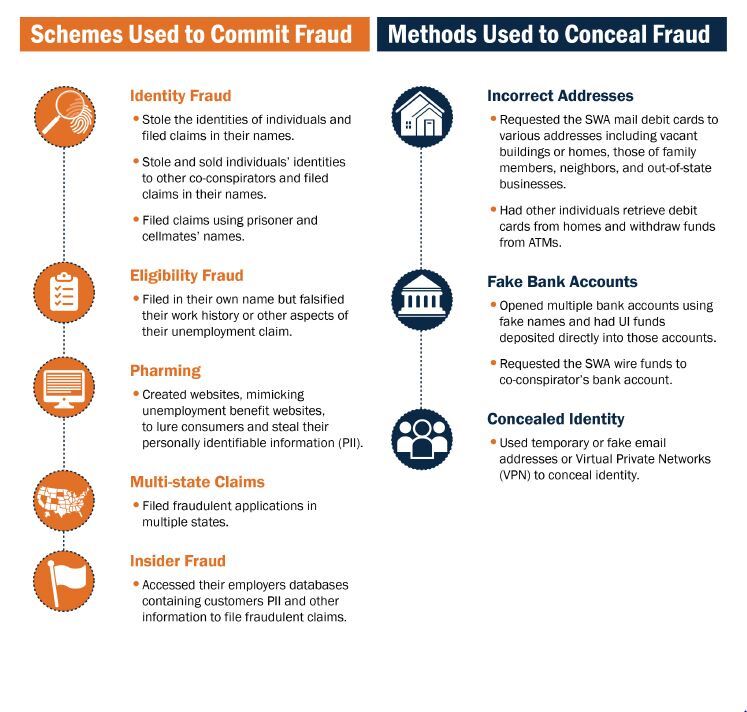|
Why did pandemic unemployment insurance (UI) programs experience massive amounts of fraud?
Here is what we know.
UI programs proved critical during the pandemic. Congress approved over $660 billion to support the programs, which saw claims increase 15 times in the pandemic’s first three months. While many claims came from those in need, fraudsters seized opportunities to expose program vulnerabilities, stealing an estimated $135 billion. How did they do it?
We sampled 45 UI fraud cases to understand the varied UI fraud schemes seen across the country and to highlight the challenges state workforce agencies (SWAs) faced in managing the programs both before and during the pandemic. These insights are critical for improving UI program integrity and performance now and in the future.
We lay it all out in our new report.
Fraud experienced in UI programs
 Preexisting challenges contributed to UI fraud
In addition to unclear federal guidance, reduced eligibility requirements,
and an influx in claims, SWAs were already facing challenges that were exacerbated by the pandemic and contributed to high fraud levels.
These difficulties included:
-
High pre-pandemic improper payment rate
-
Lack of emergency planning
-
Legacy IT systems
-
Discrepancy in data analysis efforts across SWAs
Options exist to improve the UI program
The Department of Labor's (DOL) Office of Inspector General (OIG) has provided valuable recommendations for Congress to consider that aim to address these challenges.
-
Extend the statute of limitations for fraud associated with pandemic-related UI programs.
-
Ensure the DOL and the DOL OIG have ongoing, timely, and complete access to UI claimant data and wage records.
- Ensure effective payment integrity controls in all UI programs, such as broader requirements for mandatory cross-matching.
Read the full report to learn more.
|
|
|
|